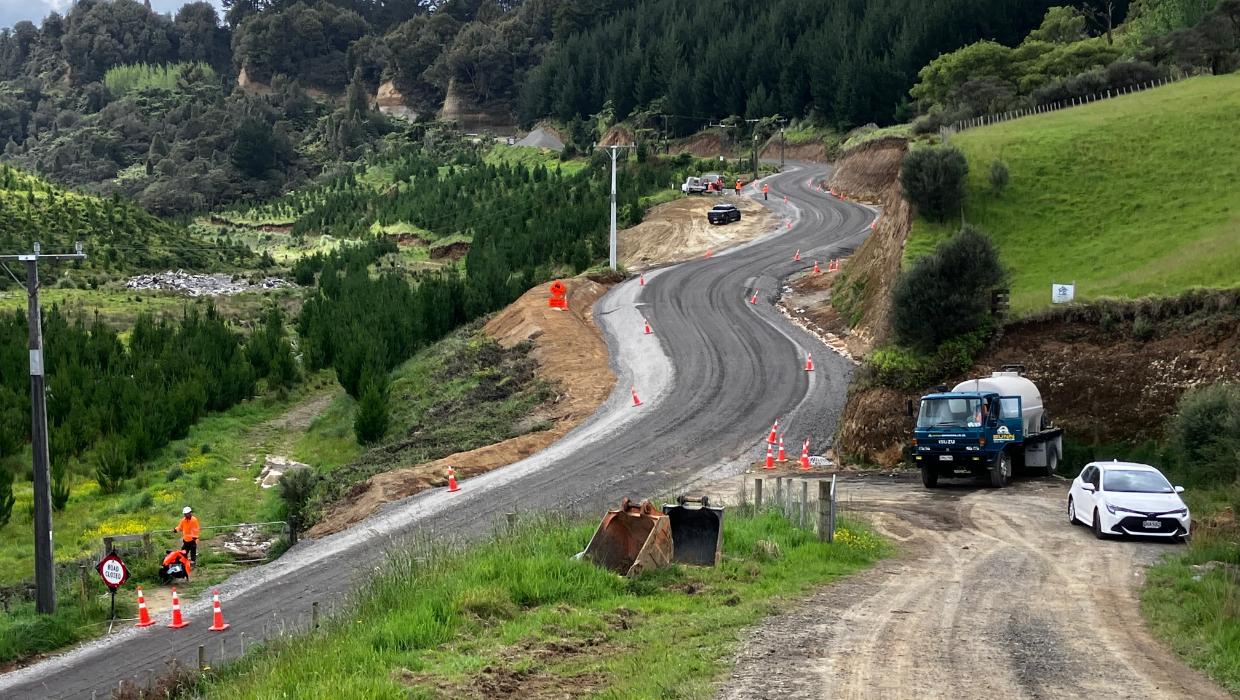Lifestyle
New Traffic Management Boosts Safety and Cuts Costs in New Plymouth

A new traffic management strategy implemented by the New Plymouth District Council has received commendations from government officials for its effectiveness in enhancing safety, reducing costs, and accelerating road projects. Transport and Infrastructure Minister Chris Bishop praised the council for its early adoption of the New Zealand Guidelines for Temporary Traffic Management, which are set to be rolled out nationally in January 2024.
The guidelines aim to improve safety for both road workers and users by evaluating risks and determining appropriate traffic control methods before initiating work. This shift follows significant public dissatisfaction regarding the overuse of road cones, which many viewed as inefficient.
In a letter addressed to the council, Bishop expressed his appreciation, stating, “I commend you for your efforts in playing a key role in the transformational shift for the sector.” The council began implementing these guidelines last year to ensure staff were adequately prepared ahead of the nationwide changes.
According to a press release from the council, Sarh Downs, the general manager of operational excellence, reported that the council has successfully reduced traffic management costs by 6%, surpassing its initial target of 5%. A notable example of this success is the construction of a roundabout at the intersection of State Highway 3 and Princess Street in Waitara. This project commenced in March 2023 and was completed in July 2024.
Downs highlighted the efficiency achieved through the new guidelines, noting, “That part of the roundabout project was completed in a quarter of the time that it would have taken with stop-go traffic management.” Furthermore, the council’s coordination with the New Zealand Transport Agency (NZTA) allowed for the installation of a new water main during the roadworks, resulting in savings of approximately $100,000 in overall project costs.
The guidelines not only focus on reducing the number of road cones but also ensure that the traffic management plan is tailored to fit the specific work and location, enhancing overall project efficiency. The council’s proactive steps exemplify a commitment to improving road safety and infrastructure management, paving the way for future advancements in the sector.
-

 World3 months ago
World3 months agoTest Your Knowledge: Take the Herald’s Afternoon Quiz Today
-

 Sports3 months ago
Sports3 months agoPM Faces Backlash from Fans During Netball Trophy Ceremony
-

 Lifestyle3 months ago
Lifestyle3 months agoDunedin Designers Win Top Award at Hokonui Fashion Event
-

 Sports3 months ago
Sports3 months agoLiam Lawson Launches New Era for Racing Bulls with Strong Start
-

 Lifestyle3 months ago
Lifestyle3 months agoDisney Fan Reveals Dress Code Tips for Park Visitors
-

 World4 months ago
World4 months agoCoalition Forms to Preserve Māori Wards in Hawke’s Bay
-

 Health3 months ago
Health3 months agoWalking Faster Offers Major Health Benefits for Older Adults
-

 Politics3 months ago
Politics3 months agoScots Rally with Humor and Music to Protest Trump’s Visit
-

 Top Stories4 months ago
Top Stories4 months agoUK and India Finalize Trade Deal to Boost Economic Ties
-

 Entertainment3 months ago
Entertainment3 months agoExperience the Excitement of ‘Chief of War’ in Oʻahu
-

 World4 months ago
World4 months agoHuntly Begins Water Pipe Flushing to Resolve Brown Water Issue
-

 Science4 months ago
Science4 months agoNew Interactive Map Reveals Wairarapa Valley’s Geological Secrets









